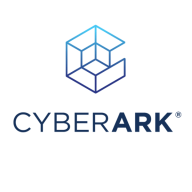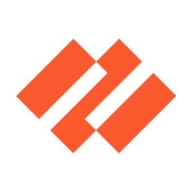

Find out in this report how the two Privileged Access Management (PAM) solutions compare in terms of features, pricing, service and support, easy of deployment, and ROI.
The return on investment lies in improved security infrastructure, addressing over-privileged access, and reducing the risk of credential compromise, which is a major source of data breaches.
The end users have the authority to reconcile the password or verify it before using session isolation, which is one of the unique features that can be enabled through Privileged Session Manager, preventing any attacks from happening within the organization when connected with sessions through CyberArk Privileged Access Manager.
CyberArk Privileged Access Manager has helped customers save on costs primarily by reducing the number of engineering and information security personnel.
Customers can see data within a week, indicating a quick return on investment.
CyberArk has been exceptional in coming back to us with immediate responses.
It could be forever until you talk to someone who knows what they are doing.
Based on the issue resolution and support quality, I rate the support 10 out of 10.
The support quality could be improved.
Resolving issues promptly.
They are responsive and provide high-quality assistance.
The CPM can reportedly handle up to 50,000 accounts independently without issue.
I would rate it a ten out of ten for scalability.
They had 40,000 passwords in this one safe, and it was saving the last ten iterations of each password object. That means they had 400,000 password objects in this safe. They exceeded the limit.
They are easy to upgrade, and with credit licensing, they scale effectively according to demand.
The solution is scalable and can easily handle an increase in the number of users.
It is easy to use with an excellent graphical user interface and extensive documentation, which contributes to its high scalability.
Proper fine-tuning and expertise ensure the product performs well.
Overall, the stability of the solution is high.
It has a large customer base and positive feedback within my network.
Hardware is generally very stable.
I have not experienced any major problems or downtime.
Perfection is unlikely as the dynamic nature of traffic and constant changes can result in occasional bugs despite regular updates.
They want everything to be on the cloud, but even in the SaaS version of CyberArk Privileged Access Manager, they need to deploy some servers on-premises.
We cannot generate a plug-in for web-based applications.
If they want clients to move to the cloud, they need to support them in real-time.
Integration with CSIRT across all use levels would make it easier for administrators to stay updated on the blocked entities without manual intervention.
Most customers go for partner-enabled support, which involves multiple layers, leading to delays.
When managing the firewall, it involves a Strata Cloud web browser that requires improvement to enhance deployment ease and call center efficiency.
CyberArk is expensive compared to other products I know.
CyberArk is comparatively expensive compared to other PAM solutions, such as Delinea, especially during renewal.
CyberArk's SaaS solution is particularly expensive.
Palo Alto is expensive in terms of pricing, particularly when comparing features to cost.
The cost involves purchasing through a vendor, which might mark up due to the supply chain.
Pricing for Palo Alto Networks is higher than other OEMs, but considering the robustness and features, it gains customer trust.
CyberArk Privileged Access Manager helps ensure data privacy because we now know who is using which credentials and at what time.
It keeps a record of activities, allowing me to easily fetch screen recordings to detect any misuse and see who did what and what happened.
It can integrate with Splunk, SNMP, and other solutions and technologies.
We use these tools to prevent all known and unknown threats using Palo Alto Networks' Wildfire and other data filtering tools to gather information, analyze traffic, manage malicious traffic, and offer visibility, control, and attack prevention.
Palo Alto's robust threat intelligence supports new updates, and I can open cases directly with their Threat Intelligence team.
The DNS security significantly enhances security through visibility and detection, allowing control over crucial traffic like DNS, which is often exploited by ransomware.
| Product | Market Share (%) |
|---|---|
| CyberArk Privileged Access Manager | 14.6% |
| Delinea Secret Server | 6.5% |
| WALLIX Bastion | 6.5% |
| Other | 72.4% |
| Product | Market Share (%) |
|---|---|
| Palo Alto Networks VM-Series | 1.1% |
| Fortinet FortiGate | 19.9% |
| OPNsense | 11.3% |
| Other | 67.7% |


| Company Size | Count |
|---|---|
| Small Business | 59 |
| Midsize Enterprise | 41 |
| Large Enterprise | 171 |
| Company Size | Count |
|---|---|
| Small Business | 28 |
| Midsize Enterprise | 17 |
| Large Enterprise | 24 |
CyberArk Privileged Access Manager is a next-generation solution that allows users to secure both their applications and their confidential corporate information. It is extremely flexible and can be implemented across a variety of environments. This program runs with equal efficiency in a fully cloud-based, hybrid, or on-premises environment. Users can now protect their critical infrastructure and access it in any way that best meets their needs.
CyberArk Privileged Access Manager possesses a simplified and unified user interface. Users are able to manage the solution from one place. The UI allows users to view and manage all of the information and controls that administrators need to be able to easily access. Very often, management UIs do not have all of the controls and information streamlined in a single location. This platform provides a level of visibility that ensures users will be able to view all of their system’s most critical information at any time that they wish.
Benefits of CyberArk Privileged Access Manager
Some of CyberArk Privileged Access Manager’s benefits include:
Reviews from Real Users
CyberArk Privileged Access Manager’s software stands out among its competitors for one very fundamental reason. CyberArk Privileged Access Manager is an all-in-one solution. Users are given the ability to accomplish with a single platform what might usually only be accomplished with multiple solutions.
PeerSpot users note the truly all-in-one nature of this solution. Mateusz K., IT Manager at a financial services firm, wrote, "It improves security in our company. We have more than 10,000 accounts that we manage in CyberArk. We use these accounts for SQLs, Windows Server, and Unix. Therefore, keeping these passwords up-to-date in another solution or software would be impossible. Now, we have some sort of a platform to manage passwords, distribute the inflow, and manage IT teams as well as making regular changes to it according to the internal security policies in our bank."
Hichem T.-B., CDO & Co-Founder at ELYTIK, noted that “This is a complete solution that can detect cyber attacks well. I have found the proxy features most valuable for fast password web access.”
Palo Alto Networks VM-Series is a highly effective advanced threat protection (ATP) solution and firewall that can be hosted on cloud computing technologies designed by many different companies. It decreases the amount of time that it will take administrators to respond to threats. Users that deploy VM-series have 70% less downtime than those who use similar firewalls. Neither protection nor efficiency are concerns when this next-generation firewall is in play.
VM-Series is being deployed to protect both public and private cloud environments. This level of flexibility empowers organizations to run the environment or environments that best meet their needs without worrying that they are going to be exposed to digital threats due to the environment that they choose.
In the public cloud, users of Palo Alto Networks VM-Series can automate their deployment and dynamically scale up their environment while experiencing a consistent level of protection. This dynamic scalability means that they also integrate their security into their DevOps workflows so that their security can keep up with their activities and requirements. Users of private cloud environments can set up security policies that can be automated to be provisioned as the need arises. Organizations don’t need to slow down when they deploy VM-Series because it makes the task of defending them so simple that they can set their defenses and forget that they are even there.
Users gain a deep level of visibility when they deploy Palo Alto Networks VM-Series. App-ID technology enables organizations to see their network traffic on the application level and spot threats that might be trying to sneak in through vulnerable points in their defenses. It also leverages Palo Alto Networks WildFire and advanced threat protection to block the threats before they can escalate.
Palo Alto Networks VM-Series Features:
Reviews from Real Users:
Palo Alto Networks VM-Series is a solution that stands out when compared to other similar solutions. Two major advantages that it offers are its ability to protect users without degrading the efficiency with which their networks perform and its centralized management system.
Jason H., the director of information technology at Tavoca Inc, writes, “There is no noticeable trade-off between security and network performance. In fact, so far, we've not seen any negative network performance with it. We're very impressed in that regard.”
An information technology manager at a tech services company says, “We use Palo Alto’s Panorama centralized management system. We have an on-prem firewall where Panorama is very good for pulling logs in from the cloud so we can see what is going on. It gives us visibility into that as well as shows us what attacks are coming in. Palo Alto’s Panorama centralized management system simplifies our security posture based on our requirements. Instead of manually pulling logs, then generating them into readable formats, it gives us the console in a readable format to view.”
We monitor all Privileged Access Management (PAM) reviews to prevent fraudulent reviews and keep review quality high. We do not post reviews by company employees or direct competitors. We validate each review for authenticity via cross-reference with LinkedIn, and personal follow-up with the reviewer when necessary.